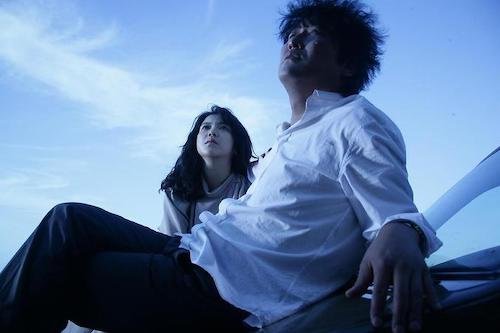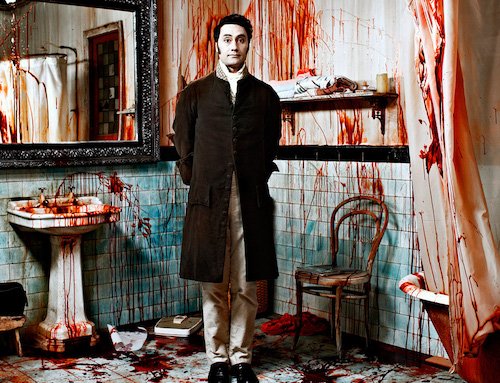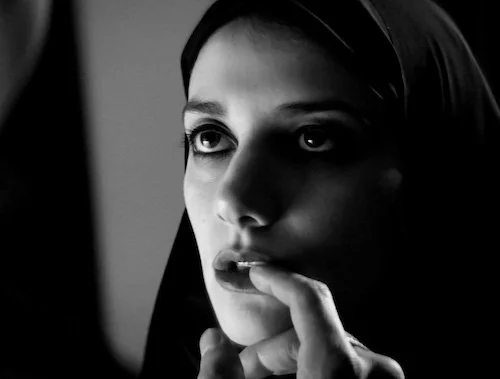Fifteen Must-See Vampire Films
Written by Andreas Babiolakis
Ever since Vlad the Impaler (Vlad III, or known as Vlad Dracula in Romanian) and his sadistic, evil ways inspired the first archetype of the vampire character (in Bram Stoker’s aptly named Dracula, published in 1897), we have had a myriad of vampire-related tales to enjoy ever since. There’s something about their thirst for blood, their weakness towards sunlight, and their mysterious, transformative, alluring ways that have transfixed horror junkies (and the like) for well over one hundred years, despite the original intention of Stoker’s novel being the warning of tyrannical people (for instance, the thirst for one’s blood was likely purely allegorical at first). This Halloween, let us dip into the history of vampires on film and fifteen sterling examples of how the lore has evolved over time.
The Classics
As soon as film was a popular storytelling medium, horror was there to display some of our worst visions. You can look as early as something like The Cabinet of Dr. Caligari, which is alleged to have the first notable twist ending in any horror feature film — all the way back in 1920. For now, we’re just going to focus on some of the vampire classics instead, and you’re sure to stumble upon some obvious selections (for good reason).
Nosferatu (1922)
Of course we have to start with F. W. Murnau’s iconic silent horror film Nosferatu, which is basically Stoker’s Dracula, but with names and some events changed (as to not be flagged for copyright infringement). Now officially one hundred years old, this iconic film set the tone for how vampires can be shown on the big screen (even if this is just Count Orlok instead of Count Dracula). The looming shadows, gangly appearance, and never-ending addictions turned Stoker’s symbolism of an awful ruler into a true creature of the night for the motion picture medium.
Dracula (1931)
Tod Browning then gave this archetype a voice: specifically Béla Lugosi’s Hungarian drawl when he played (essentially) the same character in Dracula. It’s a nearly identical tale but with Stoker’s original names, and here Lugosi’s Count Dracula could lure people in not just by his presence and capabilities of hypnotism, but by his speech as well. And so Dracula — and vampires, in general — would forever have a certain kind of accent that was fused onto the character, but I credit Lugosi’s unforgettable, loveable performance with making this happen.
Vampyr (1932)
Even though we’re into the era of talking pictures, we’re not quite done yet with the silent selections (well, we are, but also we’re not). Carl Theodor Dreyer’s horror masterpiece Vampyr was already a throwback to the kinds of horror films we would now lose because of the invention of sound in film (although the film does use sound in an aesthetic way). Vampyr is a purely artistic, delirious affair where you will feel like you are under the spell of the Danish auteur. I don’t want to give too much away, but I would personally crown this my all time favourite vampire related feature.
Isle of the Dead (1945)
With the horrors of the second World War still very fresh in the minds of viewers in 1945, Mark Robson’s Isle of the Dead places a whole community on an island, waiting to be picked off one-by-one by the plague that is killing everyone around them during the Balkan Wars of Greece. Furthermore, they’re not safe in quarantine, as on this island there is a vorvolaka: like a vampire that hungers for flesh and internal organs instead of having a thirst for blood.
Horror of Dracula (1958)
Also known simply as, well, Dracula, this British answer to the vampire classics that preceded it felt like a turning point for the lore; as Isle of the Dead was already presenting a bit of an extension from the base of this mythology, director Terence Fisher was returning to it with fresh new (blood-red) eyes. Christopher Lee is Dracula in this 1958 iteration, with another horror icon (Peter Cushing) taking on the part of Doctor Van Helsing. With Technicolor on the Count’s side, now that blood he craves is vibrant, and his skin is more pale than ever before.
The Revisionists
Like many other cinematic turning points around the time of the New Hollywood movement, this meant that any particular story was prime to be retold and/or expanded upon. This includes vampire films. Whereas Vampyr was a highly singular film for its time, it foretold what would eventually happen with vampiric lore on the big screen: personal interpretations and reinventions. This goes for Isle of the Dead as well, where the concept of what a vampire could be was approached with different lenses (or based on older concepts that predated Stoker’s Dracula). Let’s look into some films from this point on that feel the freshest and most inspired in their own rebuilding.
Ganja & Hess (1973)
During the Blaxploitation movement, there was Bill Gunn’s Ganja & Hess: now a cult film that has also inspired Spike Lee’s Da Sweet Blood of Jesus in 2014. Taking place in Africa, this film interestingly brings the practice of anthropology and religion into the mix, as Gunn’s horror film is also quite aware of the ramifications of the human species, whether it be from hypocrisies or the rippling effects of capitalism and colonialism.
Nosferatu the Vampyre (1979)
Ah, yes. Since the story of Dracula was done a handful of times already, it was only destiny that Nosferatu would be remade, but Werner Herzog isn’t just any ordinary director. His adaptation, Nosferatu the Vampyre, is impossibly colder and more gothic than the original, and I think it is one of the best remakes in film history. It is also much less hopeful, with a cynically devastating ending that wraps up the horrific images that precede it: sometimes we cannot stop the inevitable.
Near Dark (1987)
Now a cult classic, Kathryn Bigelow’s Near Dark was an early success in the director’s career: a blend of vampires, films noir, and the wild west. Bigelow and co-writer Eric Red reimagine vampires as those that wander across the country endlessly, rather than be confined to their domiciles. While released alongside other hip vampire films of the 1980s (The Lost Boys, The Hunger, Fright Night), Near Dark is just naturally cool, and it remains as such over thirty years later.
Cronos (1993)
While I must give a quick shoutout to Francis Ford Coppola’s imperfect-yet-daring adaptation Bram Stoker’s Dracula (which is artistically rich in its own right), let us shift from an established director to a brand new artist that also has three parts to his name and was destined to be a vision of the future. Guillermo del Toro’s debut feature, Cronos, is a highly effective independent horror that substitutes many traditional ideas of vampirism with the addictions of power and permanence. In an instant, we could see that Del Toro was prepared to show empathy for the figures and themes of cinematic horror, and he has continued to do so ever since.
Shadow of the Vampire (2000)
At the turn of the new millennium, E. Elias Merhige, director of Begotten, was taking a now-incredibly-familiar story and turned it on its head in a meta way. Instead of just adapting Dracula and/or Nosferatu for the umpteenth time, he was reinterpreting how the latter was made, with Willem Dafoe playing a method actor version of Count Orlok (John Malkovich is F. W. Murnau, and he also resembles the idiosyncrasies of a perfectionist filmmaker feuding with uncontrollable actors). Wickedly hilarious and incredibly strange, Shadow of the Vampire was an early sign of how vampires would be reinvented in the twenty first century.
The Modern Staples
Eventually, the coast was clear, and vampires were now not only cool: they were the biggest fad. If Interview with the Vampire didn’t turn vampires sexy for the masses, then Twilight certainly did. I’m not a fan of either property, but I can (some what) thank the latter for creating a new vampire craze in the 2000’s. This resulted in a new, modern wave of vampire films that actually are great, and I firmly believe that the genre is more inspired for imaginative richness than ever before.
Let the Right One In (2008)
Right as soon as Twilight hit, there was a far better youth based vampire film that blossomed in Stockholm, Sweden. Tomas Alfredson’s exemplary Let the Right One In combines the isolation and internalized anguish of a vampire with the struggles of adjusting in school and facing bullies. What is fantastic about this film is that it doesn’t dive all-in to vampire lore: it takes what elements it needs to tell a different and fresh story about young love and self sacrifice. It has since been remade as Let Me In (a pretty good adaptation, but not quite as powerful as the original), and Showtime has just started releasing its series version since early October; its influence and importance is still clearly felt.
Thirst (2009)
Park Chan-wook is a director that forever is prepared to spin old ideas and genres on their heads. It’s no surprise that he made his own vampire film with Thirst, starring Song Kang-Ho as a priest with bloodlust after being infected by a plague. Chan-wook approaches the suddenly massive interest in vampires in his own unique way: with a twisted lens, and a strange perspective of where beauty can come from.
Only Lovers Left Alive (2013)
Jim Jarmusch has one of the most inventive vampire films, as Only Lovers Left Alive explores the endlessness of these beings: if you truly lived forever and exhausted as much as possible through many interests and pursuits, what would that look like? It almost feels like a lightbulb going off, and now that it’s here, I’m surprised this side of vampire lore hasn’t really been explored this nicely before. As we spend the night walking around with immortals, it’s clear that there’s something humbling about knowing that even those that can experience everything aren’t whole.
What We Do in the Shadows (2014)
Is it fine to properly poke fun at vampires over one hundred years after their creation? It is? Well, let’s get to it. What We Do in the Shadows is a riot, and it feels like a huge weight is lifted off of the lore’s shoulders, since we can now address the silly side of it all. It was a smash hit that launched Taika Waititi to the stratosphere, and has since been adapted into an FX series of the same name (which, at this point, may actually be even better than this comedy modern classic).
A Girl Walks Home Alone at Night (2014)
We conclude with Ana Lily Amirpour’s exemplary genre bender (a vampire film that’s also a spaghetti western drama), A Girl Walks Home Alone at Night. This feminist depiction of misogyny and oppressed women is powerful, clever, sleek, and completely badass. Filmed entirely via the passion of a force of a filmmaker, this enigmatic picture is one of the best reinterpretations of the classic vampire genre. If this isn’t already an instant cult classic, it has every indication that it certainly will be one day.
Where we stand now is that we are seeing another Nosferatu remake (by Robert Eggers this time), bringing things full circle yet again. Whether storytellers are itching to share their version of the classic stories or create their own deviations, we’re forever reflecting upon vampiric culture in so many ways; the celebration of how frightening they can be; an effort to try and humanize them; a focus on their artistic nuances; an extension of their literary complexities. Vampire trends seem to come and go, but really they were always here to stay, lurking in the shadows and waiting to strike at the right opportunity.
Andreas Babiolakis has a Masters degree in Film and Photography Preservation and Collections Management from Toronto Metropolitan University, as well as a Bachelors degree in Cinema Studies from York University. His favourite times of year are the Criterion Collection flash sales and the annual Toronto International Film Festival.


















